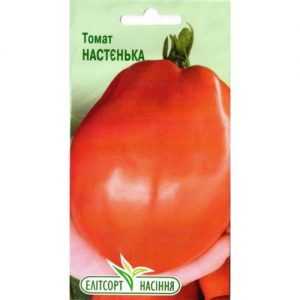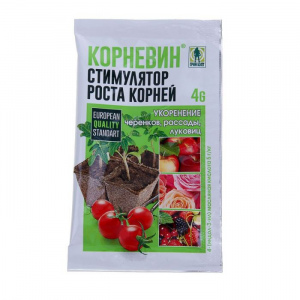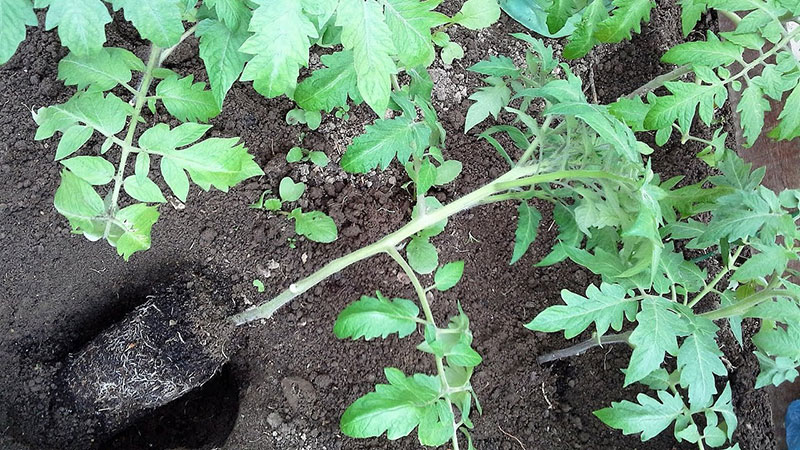A variety that is equally good for a greenhouse and for open ground - the Nastenka tomato and the method of its cultivation
Every gardener is a breeder and experimenter at heart. Farmers willingly try to grow tomato varieties and hybrids with unusual fruit color and shape. They are not afraid of the complexity of caring for such tomatoes, or the lack of confidence in their taste. In order not to face disappointment after another attempt to grow something special, pay attention to a proven variety that will definitely not let you down.
Meet the tomato Nastenka! Differs in unpretentiousness, classic tomato flavor and early maturity. How to grow it on your site - read on.
The content of the article
Description of the variety
Tomato Nastenka was bred by domestic gardeners in 2008. It was entered into the state register only in 2012. Today, the variety is one of the most popular in Russia and neighboring countries. Seeds are produced by almost all domestic firms selling planting material.
Note! Tomato Nastenka is a "basic" variety. While working on it, gardeners focused on increasing endurance and resistance to disease.
Distinctive features of Nastenka
The main distinguishing feature of Nastenka tomatoes is resistance to cold weather. This is an important quality for the crops grown in our country. Thanks to this, the variety is planted in open ground even in central Russia.
Another feature of this plant is its early maturity. The first fruits of Nastenka appear on the tables at the end of June.
 Ease of care is due to the low growth of the bushes. Stealing it doesn't need it.
Ease of care is due to the low growth of the bushes. Stealing it doesn't need it.
Nastenka's fruits themselves do not stand out. They are red in color, medium in size and have a classic sweet and sour taste. Photos of this variety are presented below.
Tomatoes are used for fresh consumption, canning and preparation of tomato products. They are also used as ingredients in hot dishes. Nastenka berries are not suitable for drying and freezing due to their insufficiently pronounced taste.
Main characteristics
Tomato Nastenka is a great option for beginners and experienced gardeners. It is characterized by undemanding care and delicious classic fruits.
Characteristics and description of the variety:
| Parameter | Indicators |
| Bush type | Determinant... Stamp. The height of the bush varies between 50-70 m. Growth stops after the formation of the upper ovary. Has thick and durable steles. A plant with a lot of greenery. The leaves are wrinkled along the edge, medium in size and bright green in color. The inflorescences are simple. The stalk has an articulation. The first inflorescence is formed at the 9th leaf level. The rest after 2-3 sheets. 12 inflorescences are formed on one tomato. |
| Growing method | Heat-loving. In the northern regions, it is cultivated only in heated greenhouses. In the middle lane, they are grown in greenhouses without additional heating. In the southern part of Russia, planting in open ground is possible. |
| Yield | Average. On average, 1 sq. m receive 10-12 kg of harvest. |
| Fruit | Medium size. The weight of one fruit varies between 150-200 g. The berries are pink-red inside and out.White spots are sometimes present near the base and in the center. The skin is matte, firm, but thin. The taste of tomatoes is sweet with a noticeable sourness. The berries are fleshy, but juicy. The dry matter content is over 6%. The shape of the fruit is round-elongated, irregular. There is no pronounced ribbing at the base. Inside there are 5-7 chambers with seeds. |
| Transportability | High. Ripe tomatoes are stored for more than three weeks. |
| Ripening terms | An early tomato variety. The first harvest is obtained 3 months after sowing the seeds. Fruiting continues throughout the summer. |
| Disease resistance | It is immune to tomato diseases. Rarely suffers from late blight. |
Seedling growing rules
Seeds are sown two months before they are planted in a greenhouse or open ground. For early maturing varieties, it is especially important to calculate the heating time of the soil. After all, if you overexpose the seedlings in pots, ovaries will form, and it will be too late to dive.
The time of sowing seeds depends on the climatic conditions in which the tomatoes will be grown:
- cities with a southern climate - the second decade of February or the first half of March;
- middle zone of Russia - mid-March;
- northern regions - March (subject to growing in a greenhouse).
Preparation of planting material
Before planting seeds, you need to make sure of their quality. For this, the planting material is soaked in a mixture of 100 ml of water and 0.5 tsp of salt. Those specimens that climb up in half an hour are considered unfit for planting. Seeds that have sunk to the bottom have the greatest chance of germinating.

Seed dressing will protect plants from disease. To do this, they are soaked in a solution of potassium permanganate, aloe juice or a mixture of water and soda. After that, the planting material is washed with running water. Further, seed growth is stimulated.
The easiest way is to use purchased funds for these purposes:
- "Epin";
- "Heteroauxin";
- Radifarm;
- "Biostim";
- Kornevin.
Homemade remedies are also used as growth stimulants. To do this, mix in equal proportions aloe juice and water or add 1 tsp of honey to a glass of water.
Advice! Another way to speed up the germination of seeds is to wrap them in pieces of gauze soaked in warm water, put them in a saucer, cover with plastic and put them in a warm place. Periodically add water to the container. Seeds are planted when they germinate. This usually takes 3 days.
Soil and container options for tomatoes
Choose wide containers for sowing seeds. They use special plastic and wooden trays or make containers for sowing seeds from scrap materials. Suitable for these purposes: deep disposable plates, containers from fast food, etc.
For picking, pots with a volume of at least 300 g are used. Peat containers are the most convenient, but plastic pots, cut bottles and disposable cups are also suitable.
All containers for growing seedlings must be prepared. To do this, they are treated with a dark pink solution of potassium permanganate or poured with boiling water.
The seedling soil should be light. In this case, it will pass water and nutrients well, which is important for immature plants.
To prepare the soil yourself, the soil is taken as a basis from the site where the picking of the mature seedlings is planned. Such soil is mixed in equal proportions with peat and humus. To loosen the composition, sawdust or sand is added to it.
Advice! Crushed coconut substrate is also used to loosen the soil. It not only makes the soil lighter, but also contains many substances useful for tomatoes.
The stores sell ready-made potting mixes. They contain all the necessary elements.
Both purchased and homemade soil must be processed before use. To do this, it is watered with a weak solution of potassium permanganate or boiling water. Another option is to roast the soil in the oven.
Sowing seeds
In the soil, grooves are made for seeds, with a depth of 0.5 to 1.5 cm.A distance of 2-3 cm is observed between them.
Seeds are laid out in the grooves. The distance between them should be at least 1.5 cm. Top seeds are covered with soil.
The soil is watered from a spray bottle. Use warm water. Then the containers are covered with foil and placed in a warm place. Before the seeds germinate, they do not need a lot of light.
To grow seedlings without picking, seeds are sown in individual pots or peat tablets. Another option is to divide the deep boxes into cells, a separate seed is placed in each of the cells. This will prevent root tangling.
How to care for seedlings
Taking proper care of your seedlings will help you grow viable plants.
Basic rules for caring for tomatoes:
- Before the seeds germinate, the seedlings are watered from a spray bottle. When the first shoots appear, this irrigation method cannot be used. Tomatoes are watered so that water does not get on the greens of the plants. Use for these purposes only water at room temperature.
- The film on tomatoes is not removed until two weeks have passed after the appearance of the first shoots.
- After germination of seeds, containers with seedlings are rearranged in a well-lit place. Tomatoes at this stage need 16 hours of daylight hours. To provide it, fluorescent lamps are used.
- Tomato seedlings are fed three times. The first one - 14 days after the pick, the second - 2 weeks after the last feeding, the third - 3 days before the pick of the plants to a permanent place.
- Tomatoes dive into separate containers after the first true leaves appear. For this, the seedlings are carefully removed from the box with a spatula. Some gardeners pinch the central root of tomatoes for better root growth. This strengthens the root, but results in stunted plant growth.
- 14 days before the tomatoes are planted in a permanent place, the seedlings begin to harden. To do this, it is taken out to the balcony or garden, gradually increasing the time spent in the fresh air.
Growing tomatoes
Nastenka's tomatoes are planted in a permanent place when the soil in the garden warms up. In the southern regions this occurs at the end of April, and in the central regions at the end of May.
In northern Russia, tomatoes are grown in a greenhouse. They are planted in it in the second half of May.
Advice! There are often sellers on the market offering ready-made seedlings. The fact that such plants are of poor quality will be evidenced by yellow leaves at the bottom of the bush, too high tomato growth and low plant turgor.
Planting seedlings in a permanent place

Tomato beds are prepared in the fall. For them, they choose well-lit areas of the garden, where nightshade crops did not grow last year.
The soil is dug up and cleaned of plant residues. It is mixed with cow dung, ash and humus. The soil is checked for acidity, if it is increased, then add dry lime.
note! Tomato beds should not be located next to potato plantings.
In the spring, the beds are re-dug up. They dig holes in them, shovel bayonet deep. Depressions are placed in rows in a checkerboard pattern. For Nastenka, a 70x40 scheme is used. For 1 sq. m place 4 plants. It is impossible to thicken tomato plantings, this will lead to a decrease in the quality of the crop.
A handful of wood ash or granular long-acting complex fertilizers are poured into each hole.
Immediately before planting, the tomatoes are removed from the pots and placed in the holes. The root must be shaped towards the center. The depressions are covered with earth without tamping it.
After picking, the plants are watered. One tomato takes up to 1 liter of water. The next watering is in 10 days.
Care for the variety Nastenka
Nastenka doesn't need to be shaped. Good yields are achieved precisely due to the spreading of the bush. Some gardeners still form 3-5 stems for an earlier harvest.
It is better to remove stepsons in the lower part of the bush.They will pick up the nutrients that the fruit needs. The lower and yellowed leaves are subject to removal.
The small growth of the bush allows you to do without a garter. If, under the weight of the fruit, he nevertheless tilts to the ground, then support will be needed.
Water the tomatoes as the soil dries. A liter of water is consumed per plant. In the middle of the day, you cannot moisten the soil.
Nastenka is demanding on top dressing. Over the summer, fertilizers are applied under the root four times. For these purposes, both home-made and purchased formulations are suitable.
How to prepare fertilizer for tomatoes:
- Yeast fertilizer. Take 50 g of yeast per liter of warm water. Add 3 tbsp to the composition. l sugar. The mixture is infused for 3 hours, after which it is diluted with 10 l of water and insisted for another 1 hour.
- Fertilizer with the addition of iodine. For its preparation, 3 kg of ash are added to 5 liters, and the composition is infused for an hour. Then the total volume of the mixture is brought to 10 liters. 1 bottle of iodine and 10 g of boric acid are added to the liquid. Fertilizer is insisted during the day. Then it is diluted with water in a ratio of 1:10.
- Ammonia solution... For 10 liters of water, take 10 ml of ammonia solution.
Foliar dressing is applied twice a season. For this, the plants are sprayed with boron formulations.
The main mistakes of gardeners
In the process of growing tomatoes, novice gardeners often make mistakes. This leads to a decrease in crop yields and plant diseases.

The most common mistakes in tomato care:
- Use of cold water. Such a mistake will lead to frostbite of the roots and death of plants.
- Watering too often... Waterlogging of the soil is detrimental to tomatoes. It leads to rotting of the root system and promotes the development of pathogens.
- Ignoring feeding. On scanty soils, tomatoes begin to ache, and their fruits become small and rare. In some cases, the berries are not formed at all.
- Excess fertilizer... In this case, the plants begin to "fatten". A lot of greenery forms on them, which leads to a significant decrease in yield and crushing of fruits.
- Incomplete removal of stepsons... This leads to disease and decay of the plant.
Diseases and pests
Variety Nastenka is resistant to most tomato diseases. It is not affected by late blight (mainly due to early maturity) and various types of rot. And yet, prevention will not be superfluous.
To avoid plant contamination, decontaminate seeds, containers, soil, and all garden tools that tomatoes come in contact with. It is important to regularly weed the tomato beds.
Compliance with the rules of care will significantly reduce the risk of plant infection. Particular attention is paid to watering and pinching the bushes.
Pests carry infections that cause plant diseases. They need to be removed. Large beetles are collected by hand. Soap solution and infusion of celandine will help get rid of small insects.
Features of cultivation in open and protected ground
In southern and central Russia, tomatoes are planted in open ground. To protect them from adverse environmental conditions, several methods are used.
The first 14 days the tomatoes are covered in the evening with plastic wrap. This protects them from night frost. In the morning, the film is removed. During a cold snap, use the film during the day.
To protect plant roots from freezing and disease, tomato beds mulch... They are covered with straw, hay, burlap or plastic wrap.
In the northern regions, Nastenka is planted in greenhouses. With this growing method, it is important to maintain optimal humidity. For this, the room is regularly ventilated.
Harvesting and application of the crop

The first fruits of Nastenka ripen at the end of June. The berries are plucked from the bush or cut with a knife as they ripen. This stimulates the ripening of other fruits.
Tomatoes are harvested together with the stalk - this way they are better stored.
Nastenka's tomatoes are used for fresh consumption and conservation. They are also suitable for preparing hot meals.
Advantages and disadvantages of Nastenka
Nastenka's pluses:
- immunity to tomato diseases;
- early maturity;
- high productivity;
- undemanding care;
- pleasant fruit taste;
- versatility in use;
- shaping and garter are optional.
Of the advantages, the exactingness of tomatoes to the composition of the soil is noted.
Farmers reviews about the variety
Nastenka has mostly positive feedback from gardeners.
Galina Irtischeva, Sochi: “Every year I plant Nastenka at my dacha. Ideal for lazy gardeners. It does not need to be tied up and shaped. Doesn't get sick. The harvest is always early and abundant. The taste of tomatoes is pleasant. "
Sergey Belousov, Moscow:“I grow Nastenka in the open field. An easy-to-grow variety that is guaranteed to yield even in cold summers. I collect about 2 buckets of tomatoes from three bushes. Tomatoes have a classic tomato flavor and are medium in size. "
Conclusion
Nastenka tomatoes are a variety that is easy to care for. The small height of the bush allows you to do without forming and garters, so even novice gardeners can grow such a tomato.
Among other things, Nastenka is an early maturing variety. Already at the end of June, you can taste the first fruits.